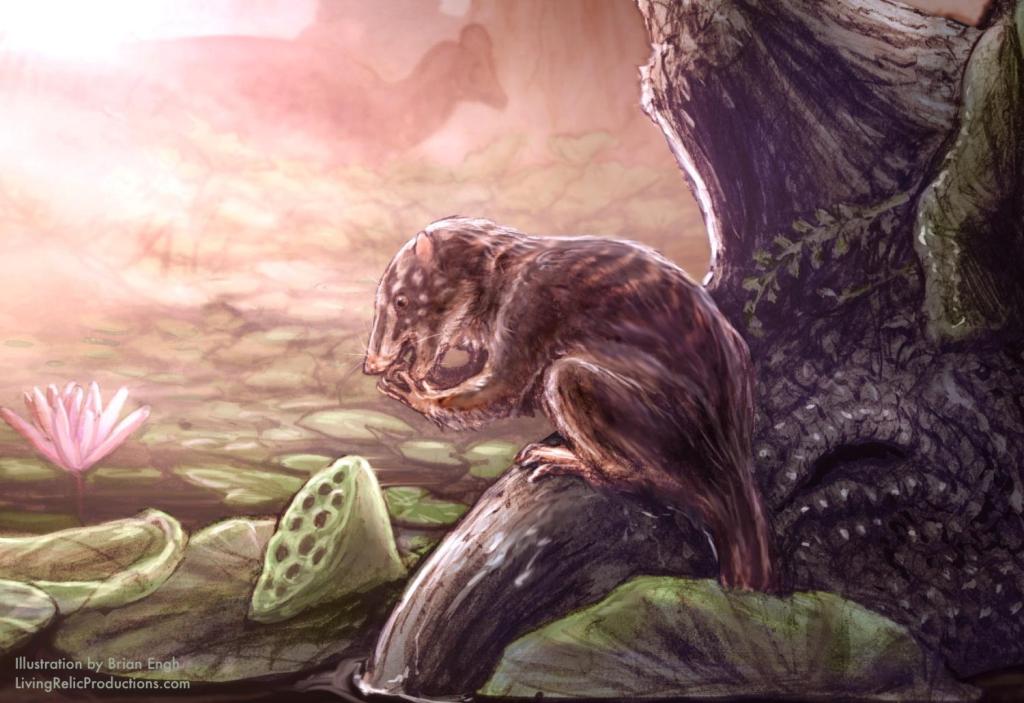Paleontologists in northwest Colorado have unearthed the fossilized remains of a nearly 75-million-year-old “swamp dweller”. The University of Colorado team has been digging near Rangely, Colorado for 15 years and recently made the discovery of the jaw of a Heleocola piceanus, a vertebrate that lived in swamps during the Cretaceous period. This marsupial was similar in size to a muskrat, weighing up to two pounds, making it relatively large compared to other mammals from that time.
Professor Jaelyn Eberle, the curator of fossil vertebrates at the CU Museum of Natural History, stated that some creatures from the Late Cretaceous period were larger than previously thought. Mammals during that time were typically small, similar to rats and mice, and are often identified through fossilized teeth. The swamp dweller’s size and unique characteristics provide valuable information about the diversity of animals that existed during this period.
The 70-million-year-old Colorado landscape was mostly marshes and swampland, as the region was part of an inland sea. The fossil was found in an area where land and sea met at that time. Other inhabitants of the region likely included traditional swamp creatures such as turtles and large crocodiles. According to co-author ReBecca Hunt-Foster, the area might have resembled the marshy environment of present-day Louisiana, with various marine and land animals coexisting.
The discovery team’s commitment to excavating in western Colorado has paid off with this significant finding. Eberle emphasized the importance of rural environments in paleontology, noting that many fascinating discoveries have come from small towns. Western Colorado’s fossils attract scientists from around the world, highlighting the region’s significance in providing valuable insights into prehistoric life. The discovery of the swamp dweller adds to the growing body of knowledge about ancient ecosystems and the diversity of creatures that inhabited them.
The find sheds light on the variety of animals that existed during the Late Cretaceous period and challenges previous assumptions about the size and diversity of mammals from that time. While mammals were generally small like rats and mice, the discovery of larger creatures like the swamp dweller suggests a greater diversity than previously thought. The unique characteristics of the swamp dweller provide valuable clues about the environment in which it lived and the interactions between different species in that ecosystem.
Overall, the discovery of the nearly 75-million-year-old swamp dweller in northwest Colorado is a significant contribution to the field of paleontology. The findings from the excavation near Rangely provide new insights into the diversity of animals that lived during the Late Cretaceous period and the unique characteristics of the swamp dweller help us better understand the environment at that time. The dedication of the University of Colorado team to excavating in western Colorado has proven fruitful, attracting scientists from around the world to study the fossils in the region and uncovering exciting discoveries that contribute to our understanding of prehistoric life.















